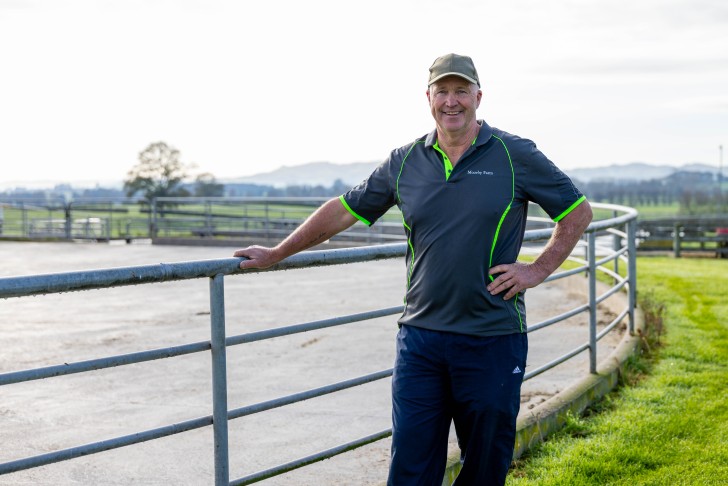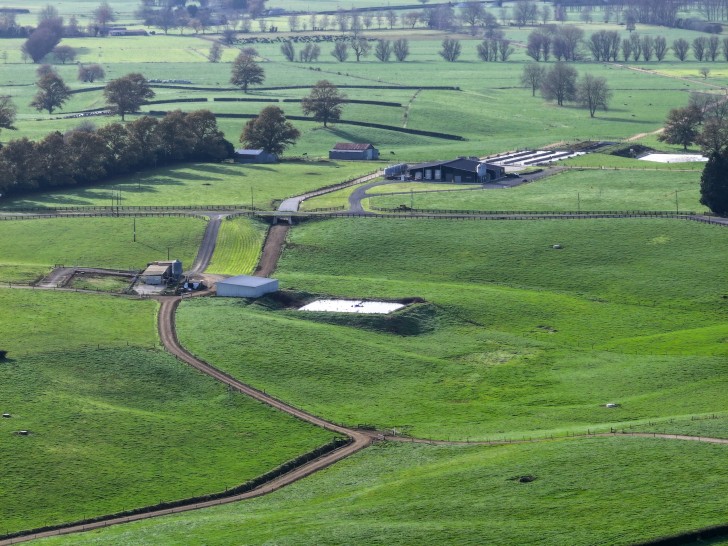John Moorby: How to stay safe on the farm
Waikato dairy farmer John Moorby knows the importance of implementing good health, safety and wellbeing practices on his 330-hectare farm. John milks 1,100 cows with the help of four staff and regularly reminds them of the hazards on farm.
Health and safety are incredibly important to our business — if someone in the team is hurt, we all feel it.
Other staff have to cover for them, or we have to get someone else in, which is not always easy to do.
If we can keep our staff safe and on the job, it's better for the team and better for our business.
I have myself and four staff milking 1,100 cows through an 80-bale rotary.
We’re into calving now, which will see 1,100 calves hit the ground between the months of July and September.
Calving is a really busy time on the farm, so we use the month prior to this to prepare to make sure our systems are as efficient as they can be.

'Stop and have a think'
We have a health and safety meeting with our staff monthly and I use online tools and resources as a guideline for this.
I take staff through what to do in an emergency, working with livestock safely, tractor safety, motorbike safety, operating machinery safely, potential trip hazards, handling sprays and other hazardous substances and, most importantly, looking after themselves.
A lot of things are common sense but it’s good to be reminded of the different risks on the farm at the different times of the year.
Often, it’s just remembering to stop and have a think. Something as simple as pausing for a moment to think about what you’re doing and the best way to do it will help you avoid a nasty accident.
I’ve been running these health and safety talks on the farm for the past 10 years and it never gets old and boring because everything is relevant to what we're doing at the time.
If we have a new person start, my wife Debbie takes them through an even more thorough farm induction, which points out all the potential hazards, so they’re fully aware of what’s on the farm before they even start.
Over the calving period, we on-board a couple of extra staff to help with the extra workload. They will go to a calf-rearing day to help sharpen their skills before we get into it.
We’re aware of everyone’s capabilities and we take them through additional training, if and when required.
Farming in New Zealand is different to farming overseas and therefore presents different levels of risks. Any overseas staff go on a course to upskill in motorbike riding and tractor safety.
We often have visitors to the farm. At our farm entrance, there are health and safety signs and a sign for visitors to scan with their phone. This signs them in and brings up hazards to be aware of, specific to our property.
For anyone going onto a farm for the first time, it’s important to keep in mind it’s a place of work and there are animals, vehicles and machines that are always moving.
A dairy farm is a hazardous place and if you've not been brought up on it, you’ve just got to be a little bit aware.
Don’t be afraid to ask the farm owner questions, as silly as they might seem. They’re important, and you’ve got to look out for yourself.

Farmstrong huge for farmer wellbeing
It’s extremely important to be well-staffed on the farm. We run a roster of eight days on, two days off over the whole season, and this plays a big part in staff not getting too tired and fatigued.
There’s always something happening on the farm. The rotary is moving, the cows, the tractors, the motorbikes – there’s certain unavoidable risks associated with that.
If staff are not well-rested, they’re not concentrating and focusing on what they’re doing and that presents a risk.
At our health and safety meetings, I remind staff of the importance of looking after themselves.
If staff are having a tough time and getting quite tired and rundown, we want to help manage them through that — our staff are important to us and what we do.
The introduction of programmes such as Farmstrong have been huge for farmer wellbeing.
I think putting it out there for both employees and employers to be aware of has made a big difference and it’s made it easier for an employee to come to their boss if they’re struggling. It gives their boss the opportunity to help – whether that be time off, a sleep or a meal in the crockpot.
Team culture is massive on the farm. I’m still 100 per cent involved in our operation, so I like to think I lead by example.
I like to think my staff come to work because they enjoy it. We make it humorous but my staff also know when we’re working, we’re working.
Easing injured staff back into work
We’ve had instances where we’ve had staff injured on the farm, or away from the farm, but they’re still an employee of ours, so we’ve found ways to manage them back into work safely.
We’ll ease staff back into work with reduced hours and modified duties, such as getting cows in or changing inflations.
During any periods when they’re off work, I keep in touch with them by phone or text.
I think it’s important for them to stay updated with what’s going on, it keeps them involved and makes it an easier transition for them when they’re ready to return to work.

Farming injuries by the numbers
In 2024, ACC accepted over 23,000 new farming-related injury claims and spent around $120 million to help people recover from these injuries.
We announced a new partnership with Safer Farms earlier this year. The new partnership will see over $11 million invested by ACC over the next five years to improve safety practices and reduce risks on the ground and in our farming communities.
ACC is a strategic partner of Farmstrong, alongside rural insurer FMG and the Mental Health Foundation.
An ACC-funded study for Farmstrong shows 58 per cent of recently injured farmers linked their injuries to diminished wellbeing. A quarter of them said it was a major factor.
Exhaustion, lack of sleep, the stresses of farming, isolation from friends and family, and being unable to take a break all add to the risks that a farmer or farm worker will have an accident, the research shows.
Farmstrong has a suite of free print and online resources especially designed to help farmers and growers manage the ups and downs of the industry and stay safe and well.
Over 15,000 farmers and growers every year are doing the things that keep them Farmstrong.




